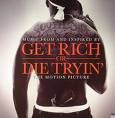You may have heard of options and seen that you can trade them in your online account, but what is a stock option and why would you even care if one exists?
Let's start first with a very basic question: What is a stock option?
A stock option is not a physical thing like holding shares in a company. Instead it is a contract between two parties.
When you own stock (or shares) you actually own part of a physical entity--a piece of a company. An option is an agreement, or contract, where one party agrees to deliver something to another party within a specific time period and for a specific price.
This distinction is important because with options you are not borrowing anything. For example, in the case of stock, you must first borrow the stock to short it--but with options there is nothing to borrow so you can short options without the worry of borrowing first.
Options are popular because they can help you get more bang for your buck. Instead of buying a stock outright, you can enter into an options contract which can be much cheaper but have the same--or even better--results.
Options can also be less risky than holding stocks, but that is not always the case. If you plan on trading options at some point make sure you understand fully the risk and downside of each trade. Also, options take more attention and can amplify the movement of a stock in your favor or out of your favor very quickly. So options trading is not for everyone, especially if you are not comfortable taking on risk or managing positions.
Learning about options isn't difficult anymore. There are a few web sites that have popped up recently to help you keep track of options news. And there have been plenty of books written recently that can really help individual investors understand how using options can be a worthwhile endeavor, depending on your financial needs.
Many of the various options exchanges have web sites geared towards individual investors looking for information on options.
Probably the best prepared to reach investors is the Chicago Board Options Exchange, which has a terrific web site set up to educate you. Visit its education page. The CBOE also holds seminars and sells books about options and how to trade them.
Your broker also can give you much guidance if you are prepared to trade options online or through a proprietary service.
Bull strategies
If you are trying to make money on a stock that you think will go up, you may adopt a bull spread strategy (hence the name).
This trading strategy can be accomplished with either puts or calls.
Remember a call is the right (not obligation) to purchase a security (stock, index, or bond) at a specific price on or by a specific date. A put is the right (not obligation) to sell a security (stock, index, or bond) at a specific price on or by a specific date. See Options terms.
NAKED LONG CALL
The simplest bullish strategy is the naked long call (see chart below). This is simply buying the call without any type of hedge and the strategy is used when you think that a security is going to make a large move upward.
Let us assume that a stock is trading $50. You may purchase a call with a strike price of 50 and about 30 days until that option expires. This call may costs $4, for example.
If the stock closes $50 or less on expiration then the call will expire worthless. This represents your maximum risk. There is no way to lose more than you paid for the call. If the stock closes at some price higher you will begin to recoup some of your investment and possibly make money.
If the stock closes at $54 on expiration, you will exercise your right to purchase the stock at $50 and immediately turn around and sell the stock for $54 yielding $4. Since this profit covers your initial investment, however, the outcome is a net wash.
This point is important since it is your breakeven point. It is always important to know your breakeven point PRIOR to making any options trade. By knowing this point you also know where you are loosing money but more importantly where you are making money.
Now comes the good part. If the stock closes above $54 you will be making a net profit. Let us say the stock closes $60 on expiration. There are two ways to take profits: The first is to exercise the right to purchase the stock at $50 and then turn around and sell it for $60 yielding a $6 profit. But you have to have enough money in your account to take delivery of the stock.
Another way to take a profit, and the better way of doing it, is to sell the option the Friday of expiration for $10. This $10 is referred to as the par value of the option. Math is: $10 minus the $4 you paid for it yields $6 in profit. (Note that you may actually be able to sell it for 10 1/8 or have to sell it for 9 7/8 depending on how volatile the stock is, or how liquid those particular options are that day.)
-





No comments:
Post a Comment